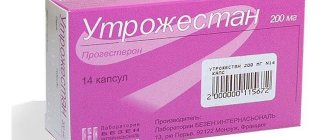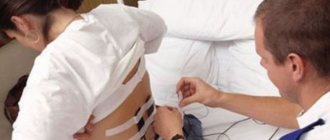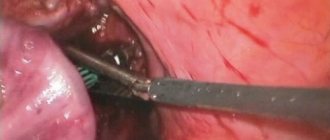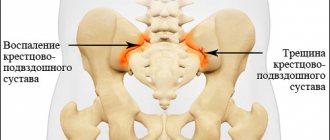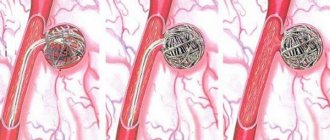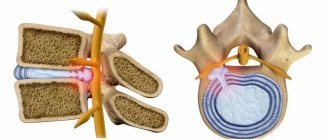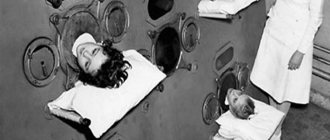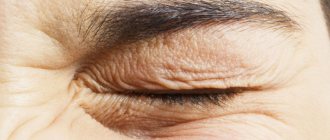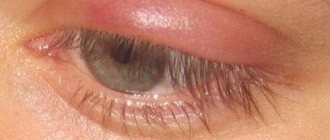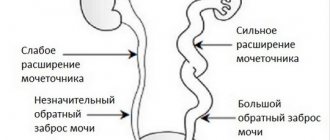WHAT IS PERINEUM?
The pelvic floor, or perineum, is the internal support of our body, of all our internal organs. It consists of three layers of muscles. The muscles of the lower (outer) layer are arranged in the form of a figure eight, the rings of which encircle the vagina and anus. The middle layer is represented by the triangular muscle. And finally, the upper (inner) layer forms the pelvic diaphragm. This is the paired and most powerful muscle of the pelvis, whose fibers create a real dome.
Such a complex structure and the close connection of the perineum with the genitourinary organs mean that this area is subject to heavy loads and plays an important role in the functioning of the organs located in the pelvis.
Indeed, the pelvic floor is a support for the internal genital organs, bladder and rectum. Damage or weakness of this muscle leads to prolapse or even prolapse of organs and disruption of their functions.
In addition, together with the muscles of the abdominal wall and the diaphragm (the muscular septum separating the chest and abdominal cavities), the pelvic floor is involved in the regulation of intra-abdominal pressure, and therefore affects the organs located in the abdominal cavity.
During childbirth, these muscles stretch in a unique way, forming a wide tube through which the baby passes. After childbirth, they contract, returning to their previous position.
Prevention methods during childbirth
The birth process consists of three stages. The sensations and behavior of a woman in labor are influenced by the distinctive characteristics of the body, pain threshold, and internal processes. Periods last differently.
First stage. The woman in labor should note the intervals between contractions in order to determine the time of departure to the maternity hospital. If it is the first birth, then you need to go to the hospital when the period between attempts is 8 minutes. You need to relax, breathe correctly, take different body positions, and also do auto-training.
Second period. At the pushing stage, it seems that you want to empty your bowels. Pushing is a strong contraction. The fetus moves along the birth canal. The gynecologist is constantly near the woman in labor. The main guarantee of the absence of impulses is the strict fulfillment of the gynecologist’s requirements.
If possible, you should talk to your obstetrician before giving birth so that he can tell you which position is easier to give birth in, when to bend over and turn. An important point in preventing ruptures during childbirth is complete psychological calm. With the right attitude, a woman will not tighten or tense up.
Third stage. Delivery ends with the baby's cry, and then the placenta comes out. As soon as the doctor assesses the integrity of the placenta and that it has completely come out, the birth ends. The path from the first contractions to the birth of the newborn is traversed by the obstetrician together with the woman in labor. You should trust him, listen to hints and advice. A competent doctor will not rush things and will tell you how to breathe correctly to avoid ruptures during childbirth.
Postpartum activities. Don’t stop training your pelvic muscles, as this will prevent negative consequences, and good preparation will help avoid ruptures during the second birth. Thanks to elastic muscles, a woman receives sexual pleasure and gives it to a man.
Is it possible to avoid ruptures during repeated births? Yes, perineal massage is a relevant procedure for multiparous women. The old seam becomes elastic, and the cracks are healed. Birth rupture cream helps to cope with this.
REASONS FOR BREAKS
Unfortunately, no matter how ideally the perineal muscles are “designed,” there are many factors that reduce their elasticity and contribute to perineal rupture. Among them:
• the woman’s age is more than 35 years, especially if this is her first birth;
• high perineum (when the distance between the anus and the entrance to the vagina is more than 7-8 cm);
• developed muscles of the perineum (for example, in women who are professionally involved in sports);
• scars on the perineum after injuries received during previous childbirth or as a result of plastic surgery;
• swelling of the perineum (with weak labor, prolonged pushing);
• fast and rapid childbirth;
• insufficient protection of the perineum (assistance provided by the midwife) when removing the baby's head and shoulders;
• inappropriate behavior of the woman in labor - during childbirth, especially during the second period, when the fetus is expelled, it is necessary to strictly follow the recommendations of the doctor and midwife who monitor the condition of the perineum.
Premature attempts, strong attempts at the moment when it is necessary to breathe through the contraction (at the moment of removal of the head and shoulders of the fetus), contribute to the appearance of ruptures.
Do not forget that the inflammatory process in the vagina (colpitis, vulvovaginitis) contributes to significantly greater trauma to the soft tissues of the birth canal. Therefore, all women are recommended to undergo smears for vaginal flora at 36 weeks of pregnancy and, if necessary, undergo appropriate treatment.
Tears can be internal (on the cervix and inside the vagina) and external (at the exit of the vagina). Cervical ruptures most often occur at the end of the first stage of labor, when the cervix has not yet fully opened, and the fetal head is already pressed against the entrance to the pelvis, putting pressure on the bladder and rectum; at the same time there is a desire to push and thereby get rid of the pain. However, this should not be done under any circumstances, since pressure on the cervix that has not yet opened leads to its rupture.
In turn, according to the principle “the force of action is equal to the force of reaction,” the cervix puts pressure on the fetal head and leads to additional injuries to the unborn child. The fetal head should descend slowly, gradually expanding the tissues of the vagina and perineum. Any forcing can lead to vaginal injuries - abrasions and ruptures.
To prevent this from happening, you need to listen to the recommendations of the doctor and midwife and not push before the head completely fills the entire vagina and reaches the exit from the pelvis. During the birth of the head and shoulders of the fetus, the mucous membrane of the labia may be injured. This occurs during rapid extension during her birth.
Consequences
Do not forget that episiotomy, despite its simplicity in execution, is still a surgical intervention, and therefore various complications cannot be excluded after it.
Even during the birth process, the surgical incision can be aggravated by its subsequent spontaneous divergence until the fact of a 3-4 degree rupture of the perineum is stated. In this case, not only ruptures of the skin can occur, but also ruptures of muscle tissue, as well as injuries to the intestinal sphincter and intestinal wall. In the most difficult situations, a vaginal-rectal fistula can form.
The seal on the seam is considered quite alarming. You need to take the situation when a lump appears on it with all seriousness. This may be a manifestation of improper joining of the wound edges, complicated by the healing of individual layers during layer-by-layer healing.
A suture that takes a long time to heal usually has one or more complications. The following symptoms are considered dangerous:
- suppuration in the area of sutures;
- green, gray, brown or yellow discharge from the genital tract or from the area of the postoperative suture;
- putrid or fishy odor;
- increased pain;
- asymmetrical arrangement of the labia in relation to each other;
- swelling of the seam, redness, if they persist for a long time;
- high temperature, feeling of weakness, chills, dizziness;
- any problems with urination - pain, difficulty passing urine;
- violation of the integrity of the seam.
Suture dehiscence is manifested by the appearance of bloody and bloody discharge from the suturing area. After removing the remnants of the threads, if they were not self-absorbing, the unhealed areas of the wound heal on their own, growing together by secondary intention. Sometimes stitches are placed again if the first ones come apart, but only on the condition that healing has not occurred over most of the wound.
The wound can become inflamed due to contact with pathogenic or opportunistic bacteria, which live in large numbers in the intestines and perineum. The idea of possible inflammation should be assumed if swelling and pain in the suturing area do not disappear for a long time. The appearance of pus is a reliable sign of infection. You should also contact a doctor at the antenatal clinic. In this case, the wound in the perineum is washed, the purulent contents are removed, and if necessary, a drainage outlet is installed. Treatment requires the use of antibacterial agents, which is not always combined with breastfeeding.
Asymmetrical labia, a lump on the scar can be a manifestation of hematomas. If they are small, treatment with antibiotics is also recommended, but if the hematomas have formed solid and deep, sometimes it is necessary to resort to surgical assistance to remove the hematomas.
One of the most talked about consequences of episiotomy among women is dyspareunia. This term refers to the pain that a woman may experience in the vagina during sexual intercourse. It is recommended for a woman to abstain from sexual intercourse until one and a half months after giving birth with a dissection of the perineum. Then the relationship is not forbidden, but it may not be too pleasant for the woman herself.
A woman and her partner cannot influence dyspareunia in any way. Neither gels nor lubricants can significantly alleviate the discomfort. Properly selected poses will help reduce them somewhat. After six months, manifestations of dyspareunia usually disappear.
In addition to severe and prolonged pain, ruptures can provoke the development of severe complications if treatment is not carried out and the doctor’s recommendations are ignored.
Why are ruptures dangerous?
- severe swelling, bruising, purulent process in the area of sutures;
- problems with urination, rectal dysfunction;
- seam divergence;
- scarring of the tissues of the perineum, cervix, which leads to miscarriage in the future, the development of isthmic-cervical insufficiency;
- decreased sensitivity in the area of ruptures.
When the cervix is damaged, inflammatory processes, endometritis, severe hemorrhages, and hemorrhagic shock often develop. In severe cases, abdominal surgery is required, during which the tissue is sutured.
WHEN IS A PERINEAL INCISION NEEDED?
There are the following indications for perineal dissection:
Threatening rupture of the perineum (occurs with a large fetus, high perineum, rigidity - poor extensibility of the perineal tissue, etc.). Most often, the rupture begins at the posterior commissure and then moves to the perineum and vaginal walls. The rupture does not begin suddenly - it is preceded by changes in the appearance of the perineum.
Signs indicating an impending rupture include characteristic protrusion of the perineum, cyanosis, swelling, and then pallor of the skin. If obstetricians notice signs of a threatening rupture, they make an incision. This is done because the smooth edges of an incised wound heal better after suturing than the rough edges of a laceration.
Premature birth - to avoid pressure from the perineal tissues on the fragile bones of the premature baby’s skull.
The need to shorten the expulsion period due to the condition of the woman in labor (high blood pressure, congenital and acquired heart defects, myopia, etc.).
Intrauterine fetal hypoxia (the incision helps reduce pressure from the perineum on the baby's head and speed up the birth process).
Surgical delivery (if necessary, use of forceps or a vacuum extractor).
Breech presentation of the fetus - to avoid difficulties in the birth of a head whose size exceeds the size of the already born buttocks.
Why are tears bad and why make cuts?
Childbirth is a special process in which there is an active change in the tissues in the perineal area with their strong stretching to allow the baby’s head, which is quite impressive in size, to pass through. And if the mechanics and physiology of labor are disrupted, if the birth canal is not fully prepared or if there is a rapid, rapid birth, complications such as soft tissue ruptures arise.
These conditions can pose a danger to a woman in labor, since they do not provide the opportunity for a complete restoration of the perineal tissues to their original form, and require medical interventions - suturing ruptures and restoring the integrity of the tissues.
Mom's Store has special oils for healing and restoring tissue after a caesarean section.
Note. Returns of food and cosmetic products are only possible if the packaging is undamaged.
When shopping at Mom's store, we guarantee pleasant and fast service.
CHOOSING THE METHOD OF PERINEAL INCISION - EPISIOTOMY OR PERINEOTOMY
Perineal incisions can be of two types: perineotomy - an incision directed directly towards the rectum, and episiotomy, in which the incision is directed to the side (if you imagine the perineum as a dial, then we can say that perineotomy is performed at 5 or 8 o'clock).
The method of dissection of the perineum during childbirth is chosen taking into account the characteristics and pathological changes of the perineum, the obstetric situation, and the size of the fetus.
Perineotomy
carried out during the normal mechanism of labor in case of a threat of rupture of the “high” perineum (the distance between the posterior commissure of the labia majora and the anus is increased compared to the norm), as well as in case of premature birth.
Indications for episiotomy
are the threat of rupture of the “low” perineum (when the distance between the rectum and the entrance to the vagina is small), acute subpubic angle (the angle at which the bones of the pubic symphysis meet), breech presentation of the fetus, cicatricial changes in the perineum, obstetric operations (application of obstetric forceps, vacuum -extractor).
Lateral episiotomy
– the incision is strictly to the side – it is carried out only in case of pathological changes in the perineum that do not allow the use of another method of its dissection (for example, for tumors) – such incisions heal worse.
Perineotomy and episiotomy
carried out in the second stage of labor, when the presenting part of the fetus has sank to the pelvic floor and tension in the perineum appears, before its rupture occurs. The operation is performed by a doctor; in emergency cases, in his absence, by a midwife.
Perineotomy operation
does not require anesthesia, since ischemia (lack of blood supply) of the perineal tissue leads to loss of pain sensitivity. Before dissection, the skin of the perineum is treated with tincture of iodine. The incision is usually made with scissors at the moment the fetal head erupts. Its length is on average 2-3 cm. Blood loss, as a rule, is small. Restoration of the cut perineum is carried out after the birth of the placenta.
Rules for making a cut
The perineal incision is made in the second stage of labor, when the baby's head is on the pelvic floor and is already being born.
This operation should be performed at the height of the attempt , when there is maximum pressure on the perineum and its blood supply is stopped. This helps prevent massive bleeding. Thus, blood loss during an incision at the height of pushing is no more than 45 ml of blood.
In addition, when pushing, the perineum stretches so much that its incision is practically painless , so anesthesia is not used for this manipulation.
The length of the incision in most cases is up to 3 cm. The decision to make an incision is made by the obstetrician and depends on the characteristics of the birth.
After the birth of the placenta, the incision is sutured. Before this, the cervix and vagina are examined to identify damage.
It must be said that depending on the depth of the wound, suturing is carried out under local anesthesia or intravenous anesthesia . After the operation, the seam is treated with iodine tincture.
catgut was used when suturing , it will resolve spontaneously. If silk threads , then the stitches should be removed a week after birth.
SEAM CARE
To identify injuries, after childbirth the doctor must examine the soft tissues of the birth canal. Regardless of whether it was a tear or a cut, the integrity of the tissue is necessarily restored. Whether pain relief will be used, and which one, depends on the degree of damage to the birth canal.
If a woman has only cervical ruptures, then no anesthesia is required, since there are no pain receptors in the cervix. Cervical ruptures are sutured with absorbable sutures (catgut or vicryl). There is no need to remove them.
If ruptures of the vagina and labia minora are detected, they are sutured, usually under local anesthesia. As with cervical ruptures, absorbable threads are used as suture material.
If the perineum has been damaged, depending on the depth of the wound, either local anesthesia or intravenous anesthesia is given (in this case, the woman falls asleep for a short time). If epidural anesthesia was used during childbirth, the woman is simply given an additional dose of anesthetic.
The integrity of the perineum is restored layer by layer. First, the muscles - deep and superficial - are carefully compared, then sutures are placed on the skin. If the sutures are applied with catgut, they do not need to be removed, but if with silk thread, the sutures are removed 5-7 days after birth.
During the postpartum period, sutures on the perineum and labia are treated with hydrogen peroxide and a solution of potassium permanganate or brilliant green once a day. This is done by a midwife in the postpartum ward. If the ruptures in the soft tissues of the birth canal were deep, then antibacterial drugs may be prescribed due to the proximity of the rectum and the possibility of infection.
For pain in the suture area, painkillers are prescribed in the first three days after birth; for swelling, the use of an ice pack is recommended.
HOW TO BEHAVIOR YOURSELF?
If you have stitches in your perineum, follow a number of rules:
• In the absence of contraindications, a woman is allowed to walk by the end of the first day after childbirth, sit - 2-3 days after removal of the sutures (that is, on the 7-10th day after childbirth). In maternity hospitals where women eat not in the ward, but in the dining room, high tables (something resembling a bar counter) are provided for such postpartum women.
• The baby will need to be fed while lying down.
• In case of a third degree rupture, during the first days you will need to adhere to a special diet (broth, tea, fruit juices, kefir) so that there is no stool for 6-7 days. On the 7th day you will be given a laxative (you cannot push): it is advisable that the act of defecation should be as easy as possible.
• Then you will be allowed to sit half-sided, on one of the buttocks - it is recommended to sit on the side where there is no incision (this can be done on the 5th day after birth), on a hard surface.
• During your stay in the maternity hospital and during the week at home, after each trip to the toilet you need to treat the perineum (rinse it with running water, dry it well). It should be remembered that the washing movements should be made from front to back, from the pubis to the rectum, to reduce the likelihood of germs entering the wound. After this, it is advisable to lie down for a few minutes without underwear so that the skin dries on its own, and then you can get dressed, but do not forget to change the pads more often (every 2 hours), since the wound should be dry.
Preventive measures
Prevention of ruptures includes 3 stages:
- proper pregnancy planning;
- preparation of the birth canal during pregnancy;
- correct birth technique.
Before conception, a woman must take a responsible approach to planning her upcoming pregnancy.
At this stage, it is necessary to identify and treat all infectious and inflammatory processes in the body, including hidden ones. During the period of bearing a child, it is recommended to do special exercises that increase the elasticity of the soft tissues of the birth canal. These include:
- Kegel exercises;
- walking with a high hip lift;
- squats with legs wide apart;
- retraction of the anus.
Expectant mothers are recommended to attend special gymnastics or fitness classes for pregnant women.
An effective prevention of ruptures is perineal massage and vaginal stretching.
When labor has already begun, the main thing to prevent ruptures is to strictly follow the doctor’s recommendations.
If there is a need for a surgical incision, there is no need to panic or worry. This intervention prevents more severe forms of trauma.
How to avoid tearing during childbirth? This question is asked by every expectant mother without exception. The main prevention of this complication is proper preparation for delivery, including preparation of the birth canal.
POSSIBLE COMPLICATIONS
Pain, swelling, wound infection, hematomas, and abscesses may occur in the area of the sutures. If you experience severe pain, a feeling of pulsation and twitching, or bursting in the area of the sutures, immediately contact your doctor in order to exclude these dangerous complications.
If complications occur, the doctor will prescribe therapy, depending on the type of complication: frequent application of ice, treatment with ointments, or surgery. In the presence of cervical ruptures, especially deep ones, with a concomitant inflammatory process in the vagina after suturing, cicatricial deformity can form - a condition in which the connective tissue of the scars deforms the cervix.
In the future, this defect can be corrected using a laser, and in case of deeper damage, surgical correction is performed - cervical plastic surgery.
Tears of the vagina and labia minora heal with virtually no consequences and without visible scars. However, with ruptures in the clitoral area, sensitivity in this area may be impaired, which is subsequently restored within several months.
Healing of the perineum can proceed without complications - only a skin scar will remain. In the presence of colpitis (inflammation of the vagina), sutures on the perineum may diverge. Formation of incompetence of the pelvic floor muscles with subsequent prolapse of the walls of the vagina and uterus.
In such a situation, a few months after giving birth, a rather complex operation will be required - vaginal plastic surgery.
PREVENTION
Is it possible to avoid tears and cuts?
It is impossible to answer this question unequivocally. But, as already mentioned, a lot depends on the woman herself - on her calmness and willingness to follow all the doctor’s instructions. What can you do on your end to try to avoid cutting?
First, you should be conscious about preparing for childbirth. You simply must be aware of normal labor and how to breathe and relax during it. This will allow you to get as close as possible to the physiological course of childbirth and avoid artificial interference in the natural process.
Let us also note that the likelihood of ruptures increases with rapid and stimulated labor, therefore, by skillfully and in time relaxing, moving correctly and, most importantly, without fear of the unknown, you will help both yourself and your baby.
Secondly, perineal massage will help you, which should be done regularly. Starting from any period (optimally - from the middle of pregnancy, but if there are complications during pregnancy, in particular increased tone of the uterus, the threat of miscarriage - then after 36 weeks of pregnancy) massage the perineum with vegetable oil every day or 2-3 times a week . It is best to perform a massage after a shower or bath in a state of relaxation and comfort.
Take a comfortable position - some like it lying down, others like it with one leg on a raised platform (for example, in the bathroom on the side). Pour 1 or 2 fingers with oil (it’s better to pour it on, rather than dip it in oil - for hygiene reasons) and insert them into the vagina. Using pressing movements, massage it from the inside, especially towards the anus (this is where the maximum stretching will occur during childbirth).
You can try stretching the vagina to the sides. It is better to do this exercise not immediately, but when you get used to the massage: at first, stretching can be unpleasant due to inelastic tissues. The duration of the massage is at least 3 minutes.
At the same time, try to relax the vaginal muscles as much as possible - then the unpleasant sensations will not be so strong (during massage), and having learned such relaxation, you will be able to apply your skill at the moment the baby is born - then the risk of ruptures will further decrease, because there will be no " excess tension in the perineum.
By the way, perineal massage will also help you if after childbirth the vagina becomes “too narrow” (this happens too!). To prepare a special oil for perineal massage, take a pack of St. John's wort and vegetable oil. Place the herb in a jar with a lid, pour oil on top and heat in a water bath for 15-20 minutes. Then put the jar in the cupboard for a week, after which it can be used.
If you have not made a special massage oil, you can use any vegetable oil.
Thirdly, systematically perform special exercises aimed at gradually increasing the elasticity of the perineal tissue (consult your gynecologist about whether you can perform such exercises and which exercises will be most effective for you).
In conclusion, I would like to say: tune in for the best; optimism and preparedness for childbirth will help you avoid surgical intervention.
How to avoid perineal tears during childbirth?
They say that a person can withstand pain up to 45 del, and during childbirth a woman experiences a “load” of up to 57 del. Doctors compare the sensation to breaking twenty bones at once. And what’s amazing: after the birth of the baby, the mother very quickly forgets about this temporary “inconvenience.” It is impossible to comprehend nature in its wisdom and perfection. But, unfortunately, she is often unfavorable to us. And even though childbirth is a completely natural process, often mothers and doctors cannot avoid many troubles.
Disruptions during childbirth are far from the worst thing that can happen to a woman giving birth. However, if they can be avoided, then why not try to do so? And doctors and mothers with experience assure: preventing ruptures during childbirth helps in almost 100% of cases.
All the methods and recommendations described below will be useful to any woman who does not have any contraindications to their implementation. But especially attention should be paid to this issue for expectant mothers who are at risk. These are women who:
- erosion was detected or treated;
- infectious or inflammatory diseases of the genital organs develop;
- a large baby is expected;
- previous births were accompanied by ruptures and incisions;
- there is a strong fear of childbirth.
KEGEL EXERCISES
Kegel exercises are quite simple. All women can do them. They serve to strengthen the muscles of the vagina and perineum, preparing them for childbirth, and help during the postpartum period.
Slow Compressions
: Tighten your perineal muscles and slowly count to three. Relax. It will be a little more difficult if, holding the muscles, hold them in this state for 5-20 seconds, then gradually relax.
"Elevator"
: We begin a smooth ascent on the “elevator” - squeeze the muscles a little (1st floor), hold for 3-5 seconds, continue the ascent - squeeze a little harder (2nd floor), hold - etc. to its limit - 4-7 “floors”. We go down in the same stages, pausing for a couple of seconds on each floor.
Abbreviations
: Tighten and relax your muscles as quickly as possible.
Pushing
: Push downwards moderately, as if you are having a bowel movement. This exercise, in addition to the perineal muscles, also causes tension in some abdominal muscles. You will also feel the anus tightening and relaxing.
Start your workout with ten slow squeezes, ten contractions and ten pushes, five times a day. The exercises should be repeated at least 25 times during the day. You can do the exercises almost anywhere - while walking, watching TV, sitting at your desk, lying in bed.
When starting out, you may find that your muscles don't want to remain tense during slow contractions. You may not be able to perform the contractions quickly or rhythmically enough. This is because the muscles are still weak - control improves with practice. If your muscles get tired mid-exercise, rest for a few seconds and continue.
How are ruptures treated?
No special treatment is required for this problem . If a rupture is detected after childbirth, it is stitched up. It is very important to connect the fabrics correctly. This is especially true for internal breaks.
Internal injuries are usually sutured with self-absorbing threads, which are made from natural raw materials (cow intestines). For external tears, the perineum is sutured with nylon or silk thread, which must be removed after the tissues have fused. While the wound is healing, it is necessary to take additional care of the perineum by treating the seams with the usual “green stuff”.
I would like to note that every woman, with the right positive attitude, with the support of loved ones and during an active pregnancy, can give birth without ruptures . It is important to do special gymnastics that will allow you to give birth painlessly. Learn to breathe correctly, prepare yourself mentally for childbirth and not be afraid of anything.
How to avoid ruptures during childbirth
Ureaplasma during pregnancy Test "Eva" for pregnancy The first days of pregnancy The effect of alcohol on conceiving a child Treatment of colds during pregnancy
